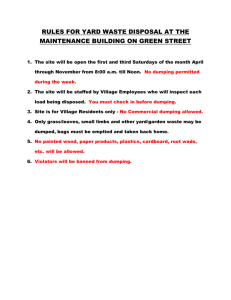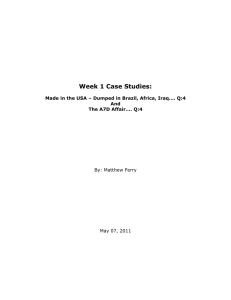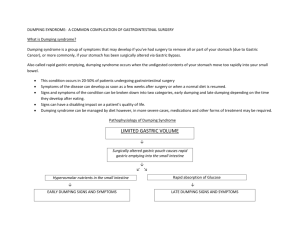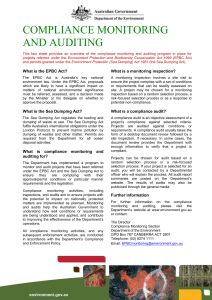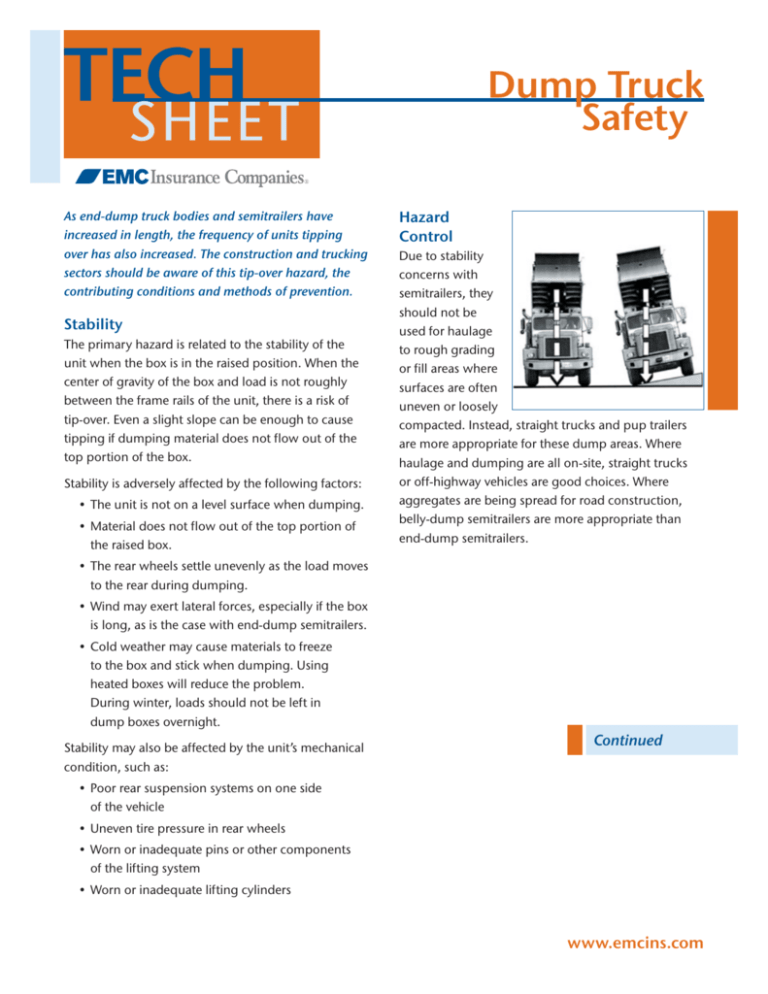
Dump Truck
Safety
As end-dump truck bodies and semitrailers have
increased in length, the frequency of units tipping
over has also increased. The construction and trucking
sectors should be aware of this tip-over hazard, the
contributing conditions and methods of prevention.
Stability
The primary hazard is related to the stability of the
unit when the box is in the raised position. When the
center of gravity of the box and load is not roughly
between the frame rails of the unit, there is a risk of
tip-over. Even a slight slope can be enough to cause
tipping if dumping material does not flow out of the
top portion of the box.
Stability is adversely affected by the following factors:
• The unit is not on a level surface when dumping.
• Material does not flow out of the top portion of
the raised box.
Hazard
Control
Due to stability
concerns with
semitrailers, they
should not be
used for haulage
to rough grading
or fill areas where
surfaces are often
uneven or loosely
compacted. Instead, straight trucks and pup trailers
are more appropriate for these dump areas. Where
haulage and dumping are all on-site, straight trucks
or off-highway vehicles are good choices. Where
aggregates are being spread for road construction,
belly-dump semitrailers are more appropriate than
end-dump semitrailers.
• The rear wheels settle unevenly as the load moves
to the rear during dumping.
• Wind may exert lateral forces, especially if the box
is long, as is the case with end-dump semitrailers.
• Cold weather may cause materials to freeze
to the box and stick when dumping. Using
heated boxes will reduce the problem.
During winter, loads should not be left in
dump boxes overnight.
Stability may also be affected by the unit’s mechanical
condition, such as:
Continued
• Poor rear suspension systems on one side
of the vehicle
• Uneven tire pressure in rear wheels
• Worn or inadequate pins or other components
of the lifting system
• Worn or inadequate lifting cylinders
www.emcins.com
Dump Truck
Safety
Vehicle Maintenance
Vehicle maintenance also plays an important role in
preventing tip-overs. The following recommendations
should be followed:
• Check tire pressures daily. Tire pressure should
be the same on both sides of the vehicle.
• Examine and lubricate pins and bushings regularly.
• Inspect suspension systems while the vehicle is
loaded to ensure they work properly and provide
even suspension. Weak suspension systems
should be replaced immediately.
• Before spreading material by dumping it from a
moving truck, make sure that the entire length of
truck is reasonably level.
• Trucks should not dump when they are parked
side-by-side with another vehicle. When a dump
unit tips over, it is often the operator in the
adjoining vehicle that is injured.
• Other personnel such as dozer operators,
surveyors and spotters should be warned not to
work near a dumping truck in case it tips over.
• Inspect hoist cylinders regularly. Replace worn
cylinders with the same size and type.
• Make sure that repairs to boxes leave the
bottom and sides clear and unrestricted. Rough
patchwork repairs near the top of the box can
catch and hold sticky materials.
Loading and Dumping
Front-to-back loading of the box should meet
allowable gross weight and axle weight limitations
set by the Department of Transportation. If material
is likely to flow poorly, lighten up the load in the
top end of the box. Always load as evenly as possible
from side-to-side.
For Additional Information
Mine Safety and Health Administration:
www.msha.gov
• Safety Hazard Pocket Cards:
Truck Drivers – Dump Sites
Texas Department of Insurance, Division of
Workers’ Compensation: www.tdi.state.tx.us
• Dump Truck Tip-Over Prevention Fact Sheet
Box liners will help most materials flow better during
dumping and will also help to keep the box in good
condition. Other dumping guidelines are as follows:
• Operators should be trained to recognize areas
hazardous to dumping, such as soft or uneven
surfaces and inadequately compacted fill.
• Before dumping, operators should ensure that
the tailgate is unlocked and that the vehicle is on
a reasonably level surface. Dumping on surfaces
that are not level is the primary cause of tip-overs.
Home Office: 717 Mulberry • Des Moines, IA 50309 • 800-447-2295 • www.emcins.com
Disclaimer: This material is designed and intended for general information purposes only, and is not intended, nor shall be construed or relied upon, as specific legal advice.
©Copyright Employers Mutual Casualty Company 2010. All rights reserved. Image courtesy of Texas Department of Insurance.
6242 (10-10)

